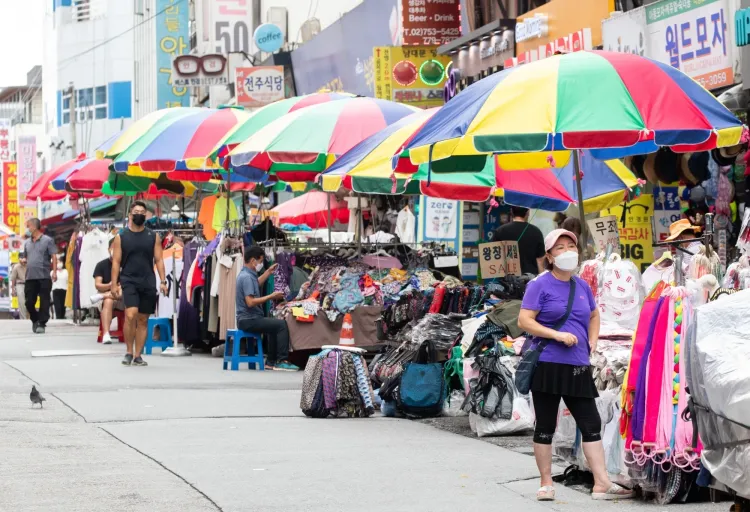What Does the June Job Growth in South Korea Mean?

Synopsis
Key Takeaways
- South Korea added over 183,000 jobs in June 2023.
- Employment growth has continued for six consecutive months.
- The manufacturing sector has lost 83,000 jobs in June.
- The construction sector shed 97,000 jobs.
- Job growth is driven mainly by hiring among older adults.
Seoul, July 16 (NationPress) In June, South Korea experienced a remarkable addition of over 183,000 jobs, representing the sixth month of continuous employment growth. However, the manufacturing and construction sectors have remained in decline, according to data released on Wednesday.
The total number of employed individuals reached 29.09 million last month, reflecting an increase of 183,000 compared to the previous year, as per the information gathered by Statistics Korea.
June's statistics underscore a persistent upward trajectory in employment following a brief setback in December, when the nation recorded a net loss of 52,000 jobs, as reported by the Yonhap news agency.
Since then, there has been a turnaround, with a net job increase of 135,000 in January, 136,000 in February, 193,000 in March, 194,000 in April, and 245,000 in May.
The employment rate for individuals aged 15 to 64 rose by 0.4 percentage points from the previous year to reach 70.3 percent in June, while the unemployment rate slightly dipped by 0.1 percentage point to 2.8 percent, as indicated by the data.
In June, the manufacturing sector faced a loss of 83,000 jobs compared to a year earlier, marking its twelfth consecutive month of downturn.
Similarly, the construction sector experienced a reduction of 97,000 jobs over the same period, continuing its decline for the fourteenth month in a row.
“Despite the manufacturing decline easing compared to March and April, it saw a slight uptick from the prior month,” stated an official from the statistics agency. “We must monitor the impacts of trade issues and ongoing tariff negotiations with the U.S.”
The agriculture sector experienced its most significant job reduction since November 2015, losing 141,000 jobs, representing an 8.7 percent decrease.
This substantial decline is attributed to an unusual cold wave in April and considerable rainfall in June, as reported by the agency.
The accommodation and food service sector also lost 38,000 jobs amid sluggish domestic consumption.
However, jobs in education services saw an increase of 72,000. The job growth in June was primarily fueled by the hiring of older adults.
Employment for individuals aged 60 and above surged by 348,000 from the previous year, with jobs for those in their 30s increasing by 116,000.
On the downside, younger age groups experienced declines. Employment for individuals in their 20s fell by 152,000, while those in their 40s and 50s saw reductions of 55,000 and 53,000, respectively.
The employment rate for people aged 15 and older improved by 0.1 percentage point from the previous year to 63.6 percent in June. However, the employment rate for those aged 15 to 29 declined by 1 percentage point year-on-year to 45.6 percent, marking a continuous drop for the fourteenth month.
The number of economically inactive individuals rose by 42,000 to reach 15.8 million by the end of June.










